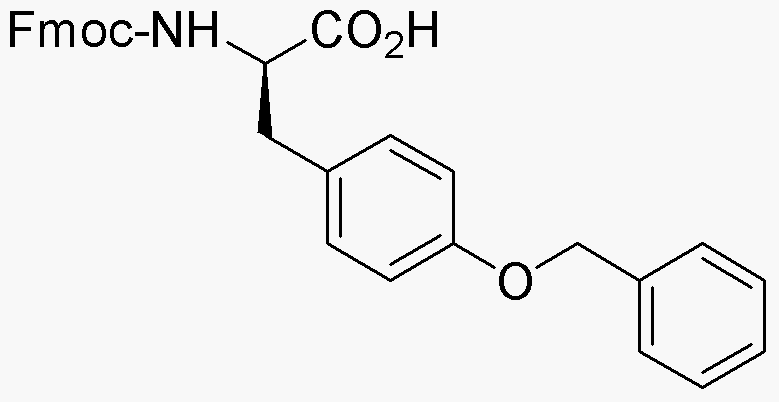Fmoc-O-benzyl-D-tyrosine is widely utilized in research focused on:
- Peptide Synthesis: This compound serves as a key building block in solid-phase peptide synthesis, allowing researchers to create complex peptides with high purity and yield.
- Drug Development: It plays a significant role in the pharmaceutical industry for developing peptide-based drugs, particularly in targeting specific receptors or pathways in diseases.
- Bioconjugation: The compound is used in bioconjugation techniques to attach peptides to various biomolecules, enhancing the efficacy of therapeutic agents.
- Research in Neuroscience: Its application in studying neuropeptides aids in understanding neurological disorders, providing insights into potential treatments.
- Custom Synthesis Services: Many chemical suppliers offer custom synthesis of this compound, catering to specific research needs and ensuring availability for various applications.
Información general
Propiedades
Seguridad y normativas
Aplicaciones
Fmoc-O-benzyl-D-tyrosine is widely utilized in research focused on:
- Peptide Synthesis: This compound serves as a key building block in solid-phase peptide synthesis, allowing researchers to create complex peptides with high purity and yield.
- Drug Development: It plays a significant role in the pharmaceutical industry for developing peptide-based drugs, particularly in targeting specific receptors or pathways in diseases.
- Bioconjugation: The compound is used in bioconjugation techniques to attach peptides to various biomolecules, enhancing the efficacy of therapeutic agents.
- Research in Neuroscience: Its application in studying neuropeptides aids in understanding neurological disorders, providing insights into potential treatments.
- Custom Synthesis Services: Many chemical suppliers offer custom synthesis of this compound, catering to specific research needs and ensuring availability for various applications.
Documentos
Hojas de datos de seguridad (HDS)
La SDS proporciona información de seguridad completa sobre la manipulación, el almacenamiento y la eliminación del producto.
Especificación del producto (PS)
La PS proporciona un desglose completo de las propiedades del producto, incluida la composición química, el estado físico, la pureza y los requisitos de almacenamiento. También detalla los rangos de calidad aceptables y las aplicaciones previstas del producto.
Certificados de análisis (COA)
Busque certificados de análisis (COA) ingresando el número de lote del producto. Los números de lote y de partida se pueden encontrar en la etiqueta de un producto después de las palabras "Lote" o "Lote".
Número de catálogo
Número de lote/lote
Certificados de origen (COO)
Este certificado de origen confirma el país en el que se fabricó el producto y también detalla los materiales y componentes utilizados en él y si se deriva de fuentes naturales, sintéticas u otras fuentes específicas. Este certificado puede ser necesario para cumplir con las normativas aduaneras, comerciales y regulatorias.
Número de catálogo
Número de lote/lote
Hojas de datos de seguridad (HDS)
La SDS proporciona información de seguridad completa sobre la manipulación, el almacenamiento y la eliminación del producto.
DownloadEspecificación del producto (PS)
La PS proporciona un desglose completo de las propiedades del producto, incluida la composición química, el estado físico, la pureza y los requisitos de almacenamiento. También detalla los rangos de calidad aceptables y las aplicaciones previstas del producto.
DownloadCertificados de análisis (COA)
Busque certificados de análisis (COA) ingresando el número de lote del producto. Los números de lote y de partida se pueden encontrar en la etiqueta de un producto después de las palabras "Lote" o "Lote".
Número de catálogo
Número de lote/lote
Certificados de origen (COO)
Este certificado de origen confirma el país en el que se fabricó el producto y también detalla los materiales y componentes utilizados en él y si se deriva de fuentes naturales, sintéticas u otras fuentes específicas. Este certificado puede ser necesario para cumplir con las normativas aduaneras, comerciales y regulatorias.


